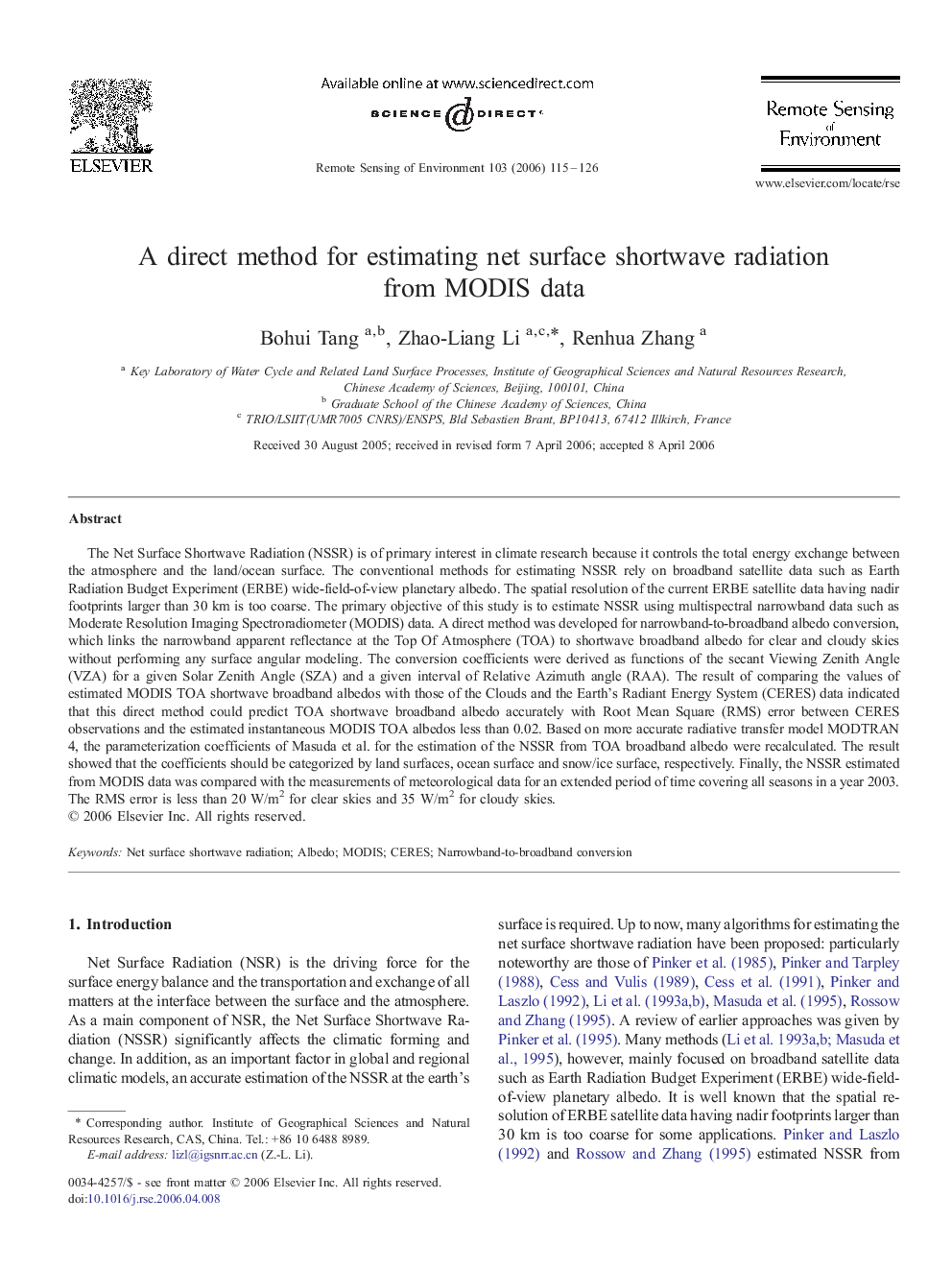| کد مقاله | کد نشریه | سال انتشار | مقاله انگلیسی | نسخه تمام متن |
|---|---|---|---|---|
| 4461172 | 1621367 | 2006 | 12 صفحه PDF | دانلود رایگان |

The Net Surface Shortwave Radiation (NSSR) is of primary interest in climate research because it controls the total energy exchange between the atmosphere and the land/ocean surface. The conventional methods for estimating NSSR rely on broadband satellite data such as Earth Radiation Budget Experiment (ERBE) wide-field-of-view planetary albedo. The spatial resolution of the current ERBE satellite data having nadir footprints larger than 30 km is too coarse. The primary objective of this study is to estimate NSSR using multispectral narrowband data such as Moderate Resolution Imaging Spectroradiometer (MODIS) data. A direct method was developed for narrowband-to-broadband albedo conversion, which links the narrowband apparent reflectance at the Top Of Atmosphere (TOA) to shortwave broadband albedo for clear and cloudy skies without performing any surface angular modeling. The conversion coefficients were derived as functions of the secant Viewing Zenith Angle (VZA) for a given Solar Zenith Angle (SZA) and a given interval of Relative Azimuth angle (RAA). The result of comparing the values of estimated MODIS TOA shortwave broadband albedos with those of the Clouds and the Earth's Radiant Energy System (CERES) data indicated that this direct method could predict TOA shortwave broadband albedo accurately with Root Mean Square (RMS) error between CERES observations and the estimated instantaneous MODIS TOA albedos less than 0.02. Based on more accurate radiative transfer model MODTRAN 4, the parameterization coefficients of Masuda et al. for the estimation of the NSSR from TOA broadband albedo were recalculated. The result showed that the coefficients should be categorized by land surfaces, ocean surface and snow/ice surface, respectively. Finally, the NSSR estimated from MODIS data was compared with the measurements of meteorological data for an extended period of time covering all seasons in a year 2003. The RMS error is less than 20 W/m2 for clear skies and 35 W/m2 for cloudy skies.
Journal: Remote Sensing of Environment - Volume 103, Issue 1, 15 July 2006, Pages 115–126